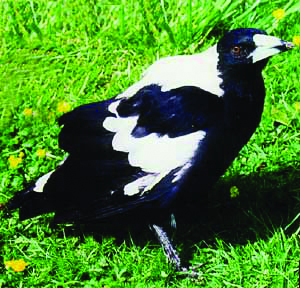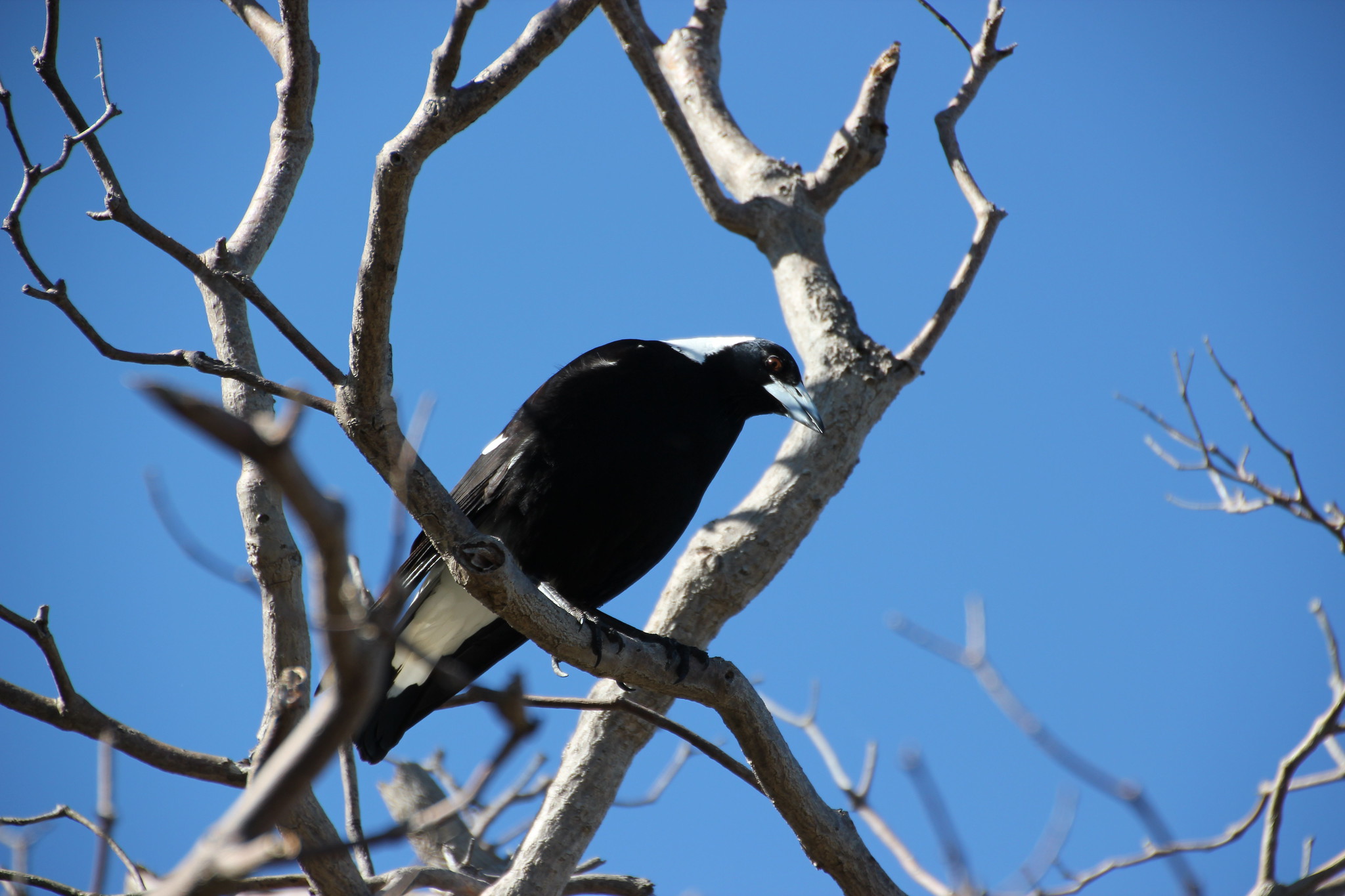| Management programme |
| Sustained control |
| Objective |
| Reduce the risk magpies pose to the public in areas where they are causing a nuisance. |
| Impacts |
| Human health, social and cultural wellbeing, amenity recreation |
Magpies have a complex social system in which they form non-territorial or territorial groups. They defend their territory by singing, aggressive posturing and fighting. This aggressive territorial behaviour can make them a pest in some situations.

What do they look like?
- Magpies are black and white in colour.
- Body length between 36cm and 44cm.
- Their distinctive flute-like call is usually heard early morning or evening; anecdotally described as ‘quardle, oodle, ardle, wardle, doodle’.
- Often seen in flocks but may also be seen in pairs.
- A long breeding season – from July until March/April.
Why are they a pest?
Magpies were introduced to New Zealand in the 1860s from Australia to control pastoral insect pests. Two sub-species were introduced, the white-backed (Gymnorhina tibicen hypoleuca) and the black-backed (Gymnorhina tibicen tibicen) magpie. Crossbreeding has occurred and they are now considered one species. Both are black and white in colour.
Magpies are widespread throughout the Waikato region. They prefer open pasture areas with nearby tall trees for roosting and nesting. They are common around farmland, bush edges, gardens and in urban areas including schools, parks and airports.
They are extremely territorial birds and can be a considerable nuisance during the breeding season by swooping on and occasionally attacking people, especially children and cyclists. Waikato Regional Council receives numerous complaints during the nesting season regarding harm caused by ‘dive-bombing’ magpies. Most complaints are in relation to urban and public parks, reserves and fields. Occasionally complaints are received in relation to private properties.
How can I control them?
There are a range of control tools available for magpies, including trapping, shooting and poisoning (e.g. control paste). Using a variety of these methods will provide the best results.
More information and advice
- Call one of our animal pest staff for advice and information on controlling magpies on freephone 0800 800 401.






To ask for help or report a problem, contact us
Tell us how we can improve the information on this page. (optional)